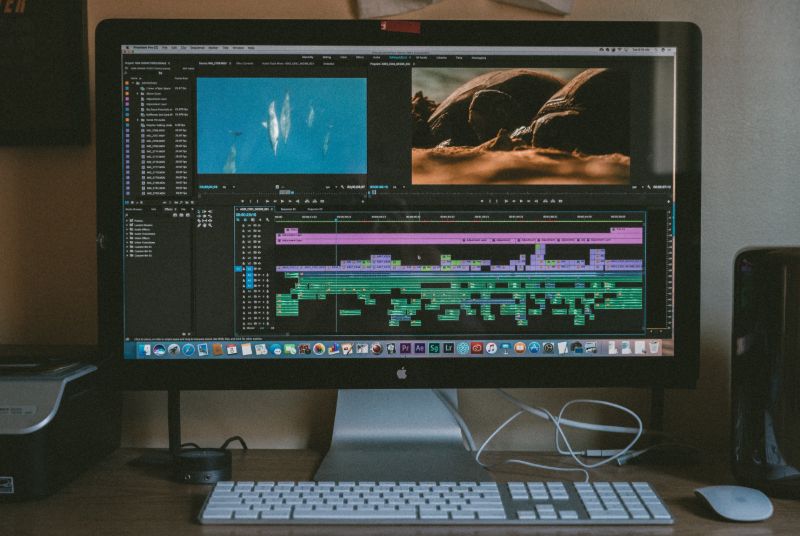
- #ADOBE AFTER EFFECTS FREE ALTERNATIVE HOW TO#
- #ADOBE AFTER EFFECTS FREE ALTERNATIVE CODE#
Add a New Adjustment Layer to your Comp and add a Displacement Map Effect choose your Distortion Map Comp in the Layer Settings. Select the Grey Solid and the Distortion Map layer and Precompose them as before. Add a new Solid Layer in grey, and mask out the top half of the screen, increase the Feather amount until you have a nice gradient effect. 

#ADOBE AFTER EFFECTS FREE ALTERNATIVE CODE#
Holding Alt, click the Stopwatch alongside the Offset Turbulence setting, and paste the following code into the Expression box on the Timeline. Add a Turbulent Displace effect and turn the Complexity up to create the Flame Flicker’s wavy motions. From the Effect Panel, add a Fast Blur to the Layer, ensuring you select Repeat Edge Pixels in the Effects Control Panel. Turn up the Contrast setting, so there is a lot of contrast between your solid white and black areas. In the Effects Control Panel, uncheck the Uniform Scaling box and increase the Scale Height to stretch the noise pattern. Create a new Solid Layer and apply the Fractal Noise Effect. The Flame Effect looks pretty cool and is taking shape, but now we need to add some distortion. Adjust the Horizontal and Vertical Displacement settings until you are happy with the look. In the Effects Control Panel, set the Displacement Map Layer setting to the Wiggle Comp. In the Effect Panel, search for the Displacement Map effect and add it to your New Adjustment Layer. Add a New Adjustment Layer to your sequence and position it above the Flame layer in the timeline. Select the Wiggle Map layer and the Grey Solid layer and Precompose them, ensuring you select Move All Attributes to the new Comp. Using the Rectangle Mask Tool, mask the top half of the screen, add a lot of Feather to cover the whole screen, ensuring your flame base is within the solid grey area. In the Expression Box in the timeline, copy and paste the following code. Hold Alt and click the Stopwatch alongside the Offset Turbulence setting. Turn the Scale up to about 800 and the Complexity to 2 or 3. In the Effects Panel, search for Fractal Noise, and drag it to your Wiggle Map layer. Create a new Solid Layer and name it Wiggle Map. Don’t worry you won’t have to Keyframe the animation. The next step is to give your Flame realistic and natural-looking movement. Step 3: Adding Wiggle to the Flame Effect Play around with the blur amount until you are happy with the look. Select the Flame layer in the timeline, and in the Effects Control Panel, choose your Blur Map from the Blur Layer setting. Search for Compound Blur in the Effects Panel, and drag it to your Flame layer. Precompose your Blur Map layer, ensuring you Move All Attributes to the new Comp. In the Effects Control Panel, search for Solid Composite Effect, and change the color to black. Increase the Feather effect substantially, so a gradient appears over your entire flame. Using the Mask Tool draw a rectangle over the top half of the screen. 
Create a new Solid Layer and name it Blur Map.The Blur Map will give your Flame the Effect of blurring towards the top, as Fire does in real life. Add a small Feather to the Mask of about 3 or 4 pixels.Grab the top Handle and drag it upwards to create the basic Flame shape.

Start by creating a new Solid Layer and use the Mask tool to draw a circle for your Flame’s bottom.In our example, we’re going to make a single Candle Flame. The Basic Flame shape can be whatever you need for your project, from a single candle flame to a large fire bonfire once you know the basics of creating this Effect, you’ll be able to customize it to your needs.
#ADOBE AFTER EFFECTS FREE ALTERNATIVE HOW TO#
Your realistic Fire Effect can be used however you like for a logo indent in a scene, to create excellent titles, there are endless possibilities when you know how to generate Fire from scratch.








 0 kommentar(er)
0 kommentar(er)
